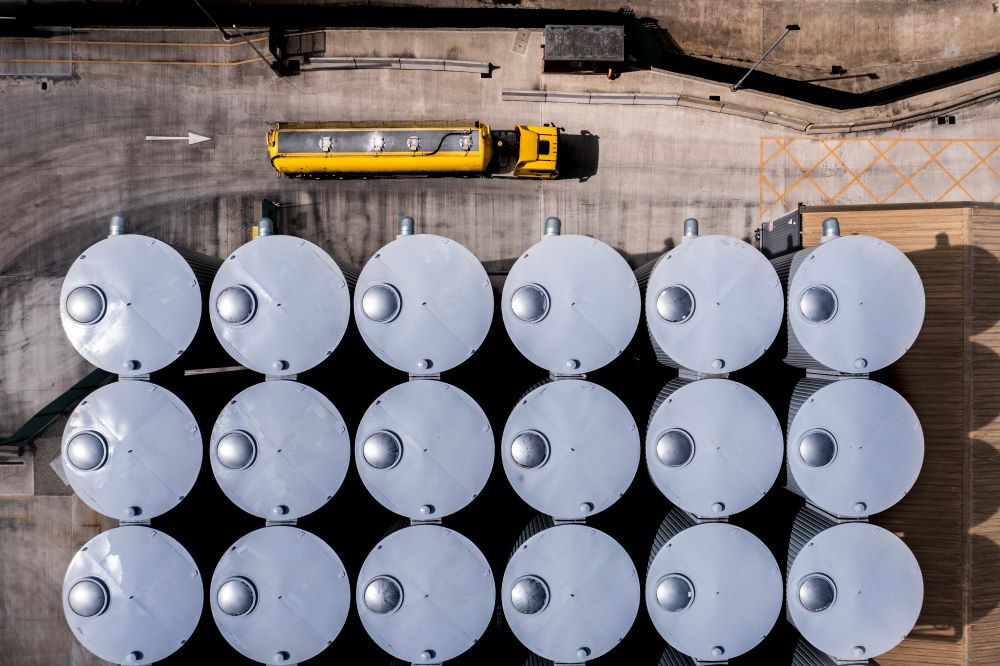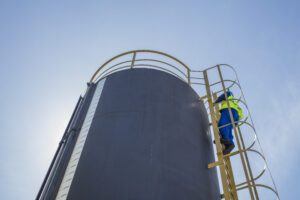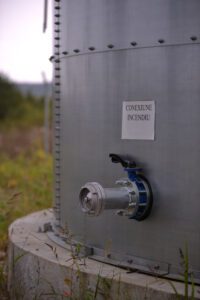In this article we will focus on Floating roof seals vs traditional sealing methods. As an engineering or facilities manager, ensuring optimal performance and safety across your operations is one of your top priorities. An essential yet often overlooked area is the sealing and containment methods used for liquid storage tanks. Traditional sealing methods like shoe seals, tube seals and rim seals have been used for decades, but they come with significant drawbacks like frequent maintenance needs, risk of emissions, and limited adaptability. Newer floating roof seal technologies provide vast improvements over these outdated methods. Floating roof seals are a superior solution that can maximize cost savings, optimize safety, and enable compliance with the strictest emissions regulations. By understanding the key benefits of floating roof seals compared to traditional seal types, you’ll be equipped to make the best choice for your liquid storage needs.
Understanding Traditional Fixed Roof Tank Sealing Methods
Primary seals, typically made of rubber sheets, are installed around the perimeter of the fixed roof to create a barrier between the roof and the tank shell. However, over time, the rubber degrades and shrinks, allowing emissions to escape. To address this, secondary seals, often made of polyethylene or polyurethane, are installed above the primary seals. While secondary seals reduce emissions in the short term, they are prone to damage and tearing, requiring frequent monitoring and replacement.
The multiple seals and mechanical shoe mounts or bolt-on connections of traditional fixed roof seals require regular inspections, adjustments, and part replacements to maintain proper seal and avoid leaks. This results in high maintenance costs, non-compliance penalties, and lost product.
In contrast, floating roof seals provide a simpler, more robust solution. Consisting of flexible coated fabrics, floating roof seals are installed around the perimeter of an internal floating roof. As the roof rises and falls, the seals move with it, automatically maintaining an efficient barrier. This negates the need for multiple seals and mechanical connections, eliminating associated maintenance costs and non-compliance risks.
Overall, compared to traditional fixed roof tank sealing methods, floating roof seals reduce emissions, cut maintenance, increase safety and environmental compliance – all while improving operational efficiency and profitability. For these reasons, floating roof seals are considered the superior technology for fixed roof tank emission control.
Introducing the Floating Roof Seal System
The floating roof seal system is an advanced method for sealing floating roof tanks that provides significant advantages over traditional sealing methods like mechanical shoe seals or rim-mounted seals.
A floating roof seal system utilizes a primary seal and a secondary seal working in tandem to create an effective vapor barrier and weather shield. The primary seal is mounted on the floating roof around its circumference, while the secondary seal is mounted on the tank wall. As the floating roof rises and falls, the seals slide against each other to maintain contact and an unbroken barrier.
Some key benefits of the floating roof seal system include:
Improved emissions control
By providing a tighter seal, less vapor escapes, resulting in fewer emissions and a more sustainable operation.
Reduced product loss
The dual seals and tighter barrier mean less evaporation of stored liquids, so less product is lost to the atmosphere.
Decreased maintenance
The seals require less frequent replacement and adjustment, reducing costs and downtime.
Compatibility
Floating roof seals work with both internal and external floating roofs of any standard size or type.
Weather resistance
The system can withstand temperature extremes, high winds, and precipitation without damage, leaks or excess wear.
In summary, floating roof seals represent an environmentally-friendly, cost-effective solution for creating a durable vapor barrier and weather seal in floating roof storage tanks when compared to traditional sealing methods. They are a sound investment that can pay dividends through improved sustainability, reduced losses, and lower long-term costs. For these reasons, floating roof seals have become an industry standard best practice.
Key Benefits of Floating Roof Seals
Emissions Control
Floating roof seals offer superior emissions control compared to traditional fixed roof designs. As the floating roof rises and falls with the liquid level, the seal assembly creates an airtight barrier between the product and ambient air. This flexible seal prevents the escape of vapors that can contribute to pollution and ozone depletion.
Product Loss Minimization
The snug fit of floating roof seals also serves to minimize product loss due to evaporation. By eliminating airflow across the liquid surface, less of the stored material can transform into vapor and escape from the tank. This benefit translates into lower costs through increased inventory yields and less waste.
Safety
Floating roof seals enhance safety in several key ways. First, reducing the risk of fire or explosion, by preventing the buildup of flammable vapors in the headspace between the floating roof and the fixed roof. Seals also improve stability of the floating roof by securing its position and limiting uncontrolled rocking or tilting that could lead to structural damage or failure.
Economic Advantages
While Floating roof seals may have higher upfront costs than traditional tank linings, they often lead to long-term cost savings through improved product retention, reduced waste, lower maintenance, and enhanced safety, promoting environmental compliance. For many industries, these cost savings and sustainability benefits make floating roof seals a smart long-term investment.
In summary, floating roof seals should be considered for any operation looking to optimize storage tank efficiency, safety, and eco-friendliness. High-quality floating roof seals offer substantial benefits, including emission control, reduced product loss, enhanced stability, and cost savings.
Floating Roof Seals vs. Traditional Sealing: A Side-by-Side Comparison
Floating roof seals provide several advantages over traditional sealing methods for storage tanks. By comparing the two side by side, the benefits of floating roof seals become clear.
Cost-Effectiveness
Floating roof seals are generally more affordable than fixed roof designs with internal floating covers or seals. They do not require the construction of a fixed roof, relying instead on the floating roof itself to serve as the primary seal and cover. This results in material and labor cost savings.
Adaptability
Traditional seals, on the other hand, typically require more intensive modifications to install and may not suit some existing tank structures.
Weather Resistance
Engineers design high-quality floating roof seals to withstand exposure to the elements, including UV radiation, temperature extremes, precipitation, and wind. These seals are constructed of durable, weather-resistant materials that can last for decades with proper maintenance. In contrast, the seals and gaskets used in fixed roof tanks with internal floating covers tend to deteriorate more quickly when exposed to weather, requiring frequent replacement.
Emissions Control
Perhaps the greatest advantage of floating roof seals is their ability to effectively control emissions from storage tanks. By resting directly on the surface of the stored liquid, the seals rise and fall with the level of the liquid to provide an unbroken barrier between the liquid and the atmosphere. This minimizes the evaporation of liquids and gasses, reducing emissions of volatile organic compounds (VOCs) and other hazardous air pollutants (HAPs). Air pollution control regulations require floating roof seals in many areas.
In summary, floating roof seals offer substantial benefits over traditional tank sealing methods. They are more cost-effective, adaptable, weather-resistant, and enable superior emissions control. For these reasons, floating roof seals have become the preferred choice for sealing and covering storage tanks in many industries.
Choosing the Right Roof Seal System for Your Needs
When choosing a roof seal system for your storage tank, floating roof seals are superior to traditional sealing methods like mechanical shoe seals or compression seals. Floating roof seals offer significant advantages:
Reduced Emissions
Floating roof seals create an air-tight barrier between the stored liquid and the atmosphere above, minimizing vapor emissions into the air. This results in lower emissions of volatile organic compounds (VOCs) and hazardous air pollutants (HAPs). Using floating roof seals can help facilities comply with strict emissions regulations.
Decreased Fire Risk
By preventing the build-up of flammable vapors in the headspace above the liquid, floating roof seals lower the risk of fire and explosion. This enhances safety for workers and surrounding communities.
Cost Savings
Due to reduced product loss from vapor emissions and a lower chance of catastrophic events like fires, floating roof seals can significantly cut costs compared to traditional sealing systems. Savings in the long run often offset the initial investment in a floating roof seal system.
Adaptability
When choosing a seal for your floating roof, consider tank compatibility, ease of installation and maintenance, and cost-effectiveness. Installing the proper seal system can help your facility achieve safety, environmental and economic benefits for years to come. Floating roof seals set to replace industry emission control standards with their clear advantages.
Conclusion
Ultimately, prioritize floating roof seals is best for your storage tank’s sealing method. They offer unparalleled environmental protection and cost savings over traditional methods. As regulations tighten and costs rise, choosing an advanced system that exceeds requirements and optimizes your budget is critical. While traditional seals have served their purpose, technology has unlocked new solutions that redefine industry standards. If reducing emissions, maximizing product retention, and future-proofing your operations are priorities, floating roof seals are the clear choice. Their performance and sustainability benefits position them as a superior option for any storage facility looking to the future. Make the investment in a system that invests in you and the environment in return.




